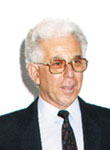Overlooking the Bay of Haifa on the slope of Mount Carmel is a large artificial, rectangular cave venerated to this day as Elijah’s Cave and associated with Elijah’s famous contest with the priests of Baal (1 Kings 18:20–40). The cave may have been created as early as the time of Herod. For hundreds of years pilgrims have come here seeking guidance from the prophet or a cure for an ailment or a husband for a daughter or to celebrate some good fortune. Its walls are covered with hundreds of names incised by visitors—a treasure trove for scholars.
These names have been studied by a number of scholars, most prominently by the distinguished Israeli archaeologist and classicist Asher Ovadiah of Tel Aviv University in the 1960s. He published two preliminary accounts of his study, one in 1968 in a two-page report in a French scholarly magazine and the other in a popular Hebrew magazine in 1969.

Beginning in 2002 Israeli scholar Tal Ilan, who teaches at the Freie Universität in Berlin, began publishing a multi-volume Lexicon of Jewish Names in Late Antiquity. In Part II, published in 2012, she includes an appendix (written with her colleague Olaf Pinkpank) devoted to an examination and analysis of the names in Elijah’s Cave.

In this volume, Ilan acknowledges Ovadiah’s earlier study and his preliminary publications in which he claims that there are more than 150 Greek inscriptions, two in Latin and one in Hebrew, incised on the walls of Elijah’s Cave. In those preliminary publications, he also divulges 14 of these names. Ilan goes on: “Ovadiah claimed that he intends to publish the inscriptions from the cave at a later date, but until 2011 (42 years later) he has not done so.”
In a more personal vein, she writes: “It seemed inconceivable to me to publish volume [Part] 2 of my Lexicon of Jewish Names without reference to this rich collection of names.”
In 2011 Ovadiah began publishing the final report of his study of the names in Elijah’s Cave, first in a festschrift for Michele Piccirillo and then in 2012 in a long article (both with Rosario Pierri) in the scholarly journal Liber Annuus (which did not appear until 2013).1
At the end of this article Ovadiah criticizes Ilan for identifying a number of Greek and Latin names from Elijah’s Cave as Jewish. Although Jews unquestionably adopted Greek and Latin names in Late Antiquity (c. second–sixth centuries C.E.), Ilan goes too far in identifying them as Jewish, he says. He then goes further in his criticism: She published her study “without my knowledge. This behaviour is unacceptable, both from the ethical and professional points of view. Moreover, such an act is an invasion of scientific and intellectual property.”
Did she deserve it?

